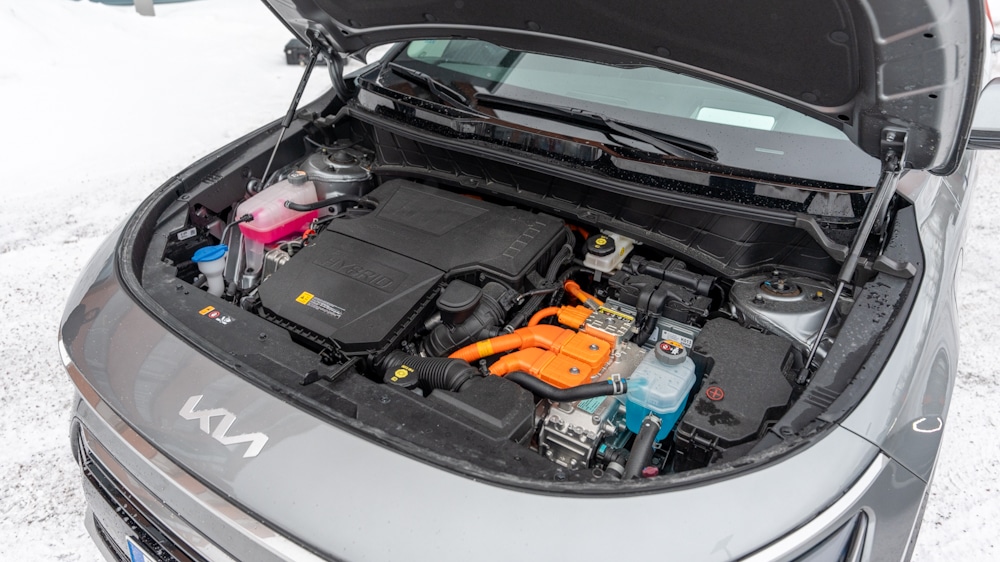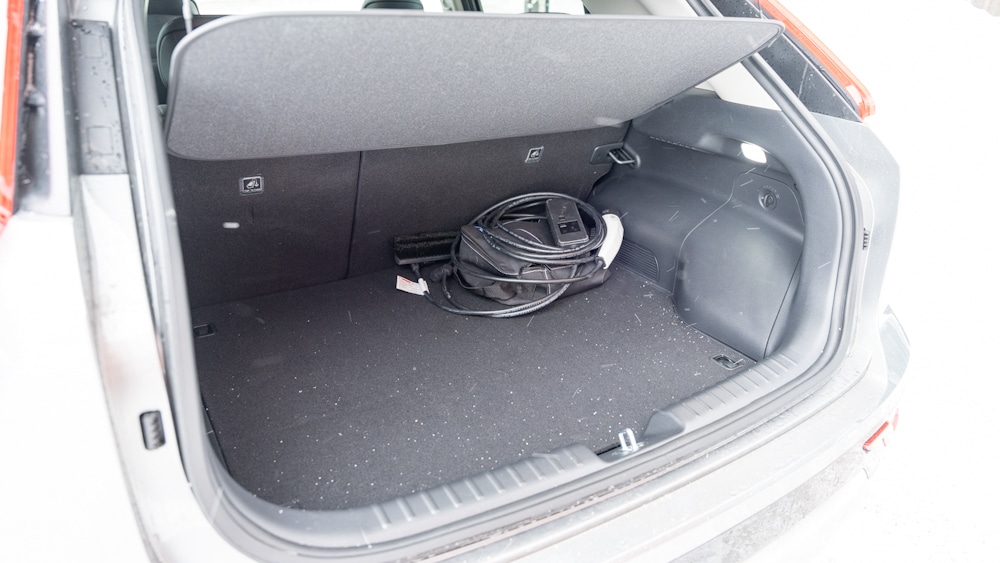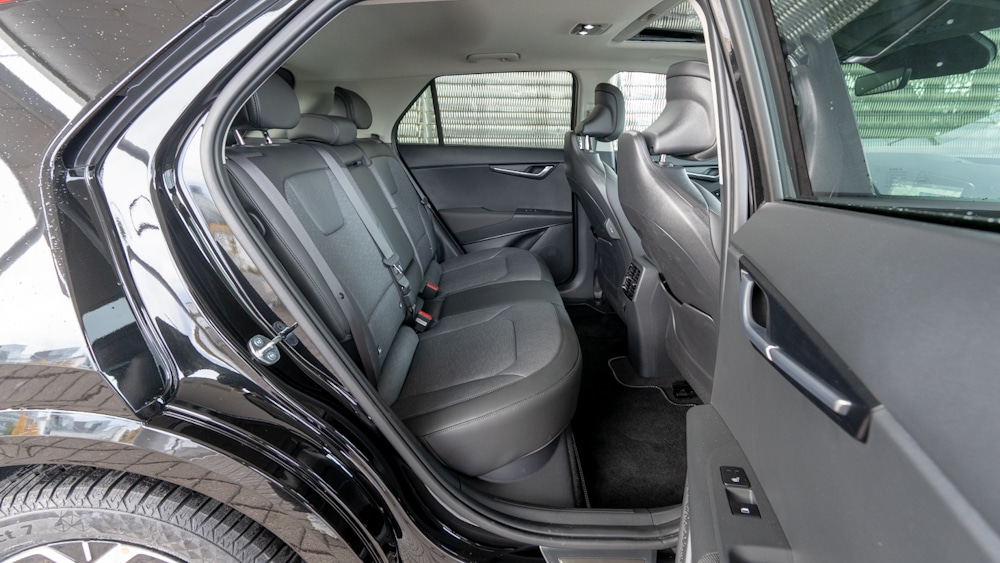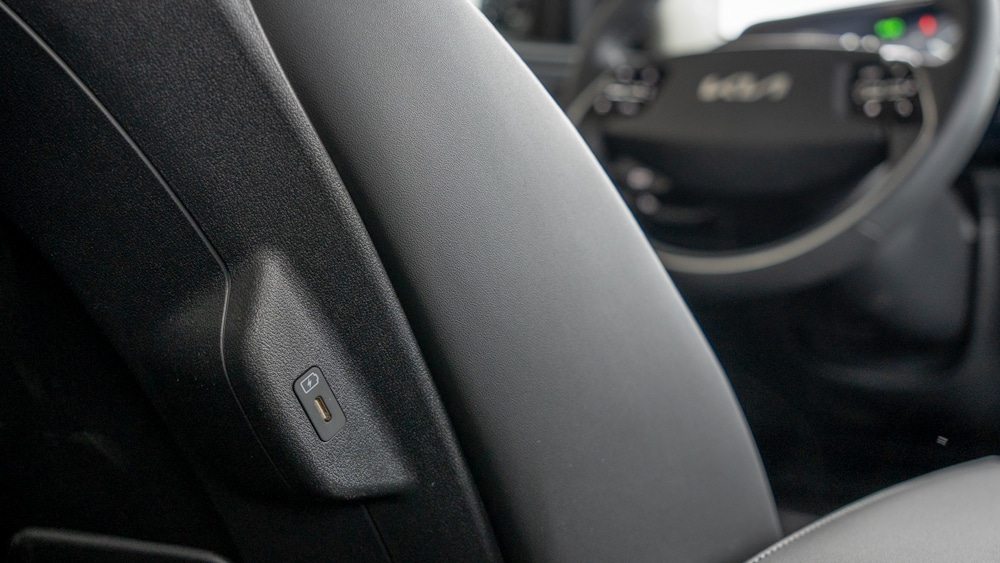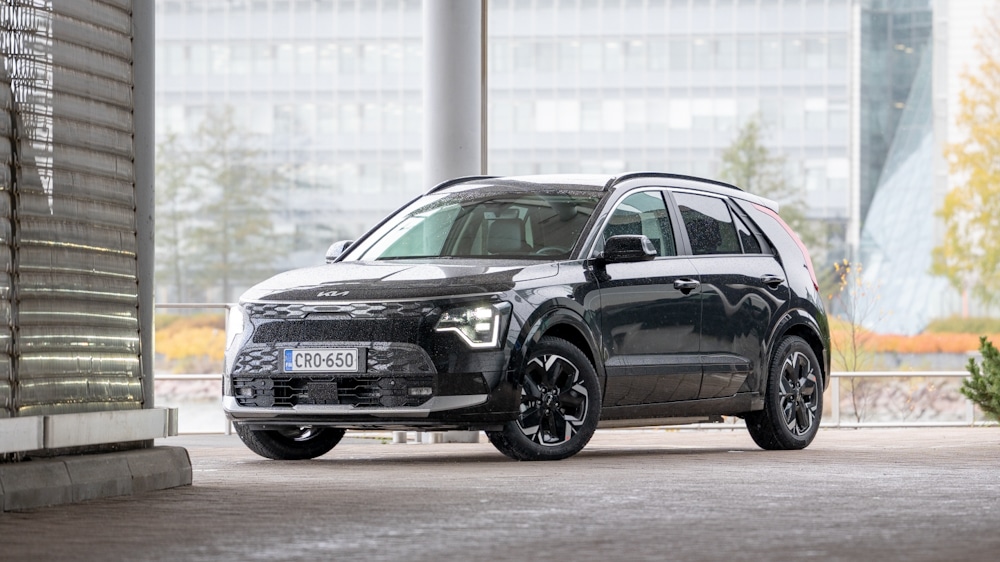The Niro is the only model in Kia’s current range to offer a full electric powertrain with hybrid combustion engine options. Competing models that offer the option of a full electric and hybrid power train in the same body style often go wrong and the result often looks like a mediocre compromise.
Even a Niro has its weaknesses, but under the Korean skin is a car that is in many ways brilliant – whether all-electric or hybrid.
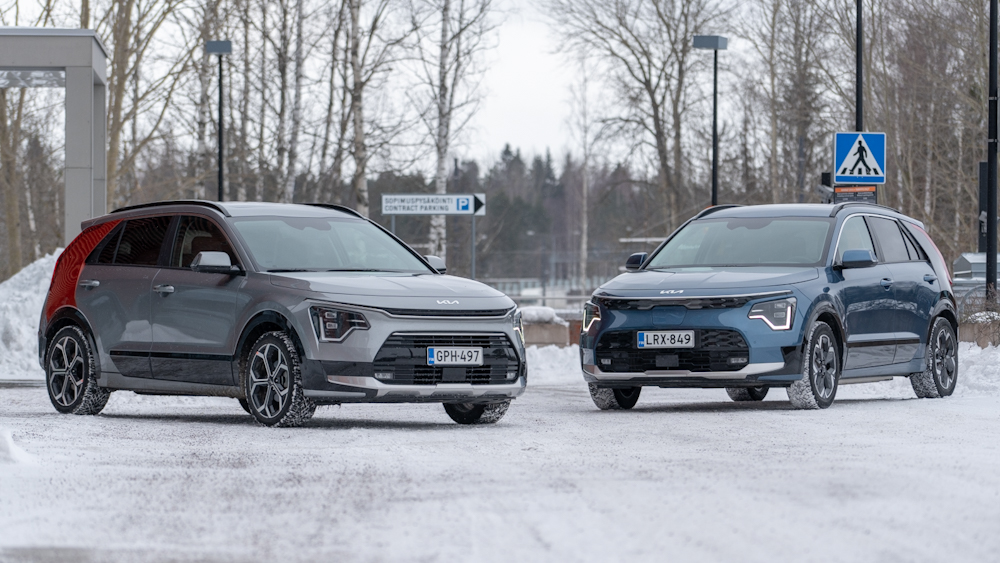
The Kia Niro is a compact crossover, measuring just 4.4 metres in length. The Niro’s styling doesn’t evoke much emotion one way or the other, although it must be said that compared to the previous Niro body model, the styling has clearly become more streamlined. The new Kia EV9 borrows a design language from its little brother, the Niro, even though the cars are in completely different ranges in terms of physical size.
In the case of the Niro, don’t be fooled by its looks and size, because despite its compact size, the car has at least a good amount of space inside and doesn’t run out of luggage space. There’s plenty of space in the front and rear, even when seating taller people in a row.
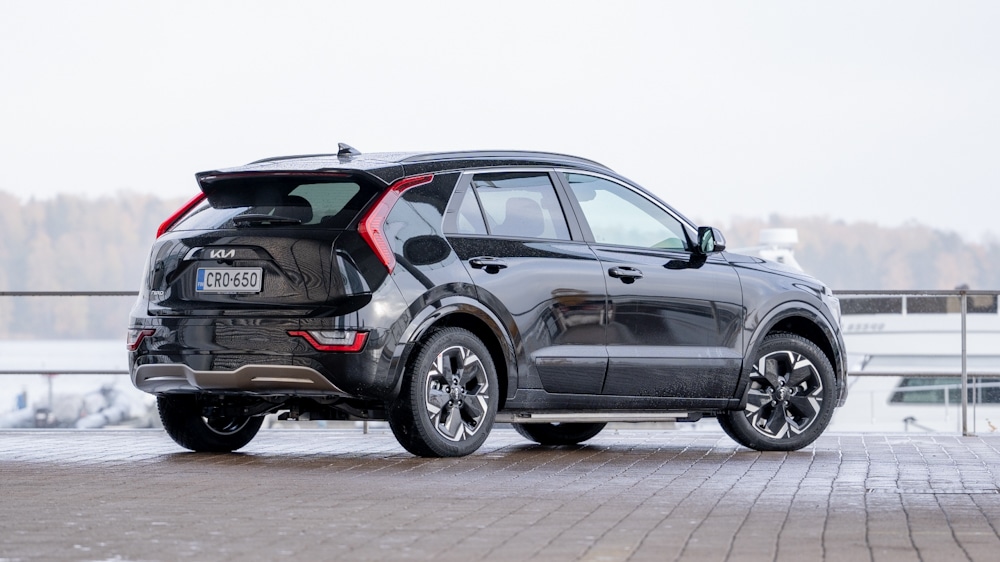
The driver’s seat is mainly comfortable. The view out is clear thanks to the slightly higher than normal seat height. Only the seat’s short thigh section occasionally makes it necessary to find a new driving position on longer journeys, but the otherwise shapeless-looking driver’s seat provides good support.
The ergonomics of the cabin in terms of buttons and other controls are mainly good. However, the dashboard’s display is positioned too far away and you have to reach for the screen. Below the centre screen are the climate and radio controls. With the exception of the two control dials, the switches are touch switches.
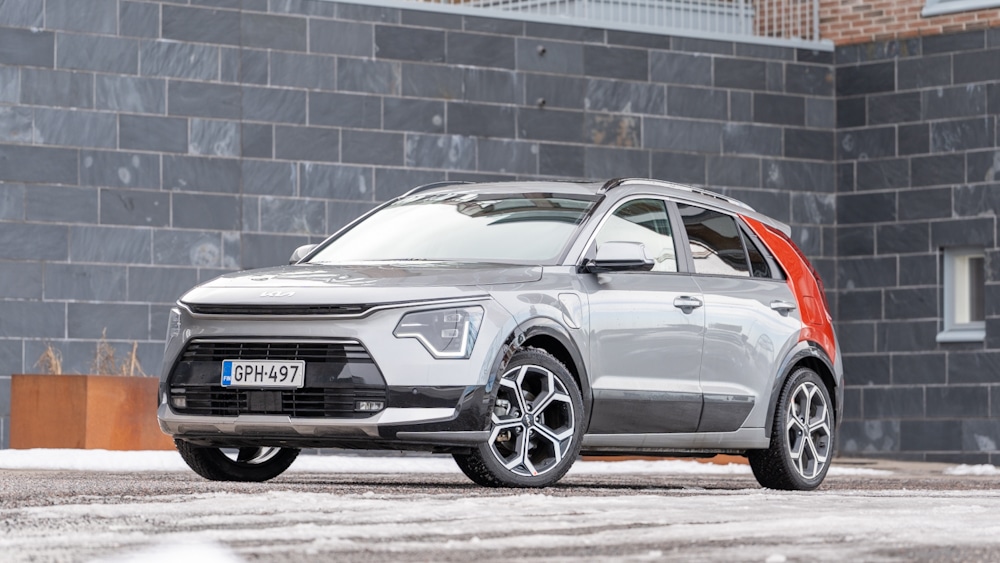
The comfort of the touch switches is not quite the same as the traditional physical buttons, but after a short period of getting used to them, they seem to work just fine. The small panel displays either media or climate control functions at once.
At the rear, travel comfort is enhanced by good longitudinal and vertical space and easy-to-reach usb-c charging points in the front seat backrests. The rear door opens to a wide angle of almost 90 degrees, making it easy to reach the rear seats. There’s also a 220-volt or 200-watt power socket in the rear, depending on the trim level.
The absolute strength of the Niro
Customers are given a rare freedom of choice, as the Niro can be had in either hybrid, charge hybrid (PHEV) or fully electric (EV) versions. We tested the last two power lines of these models.
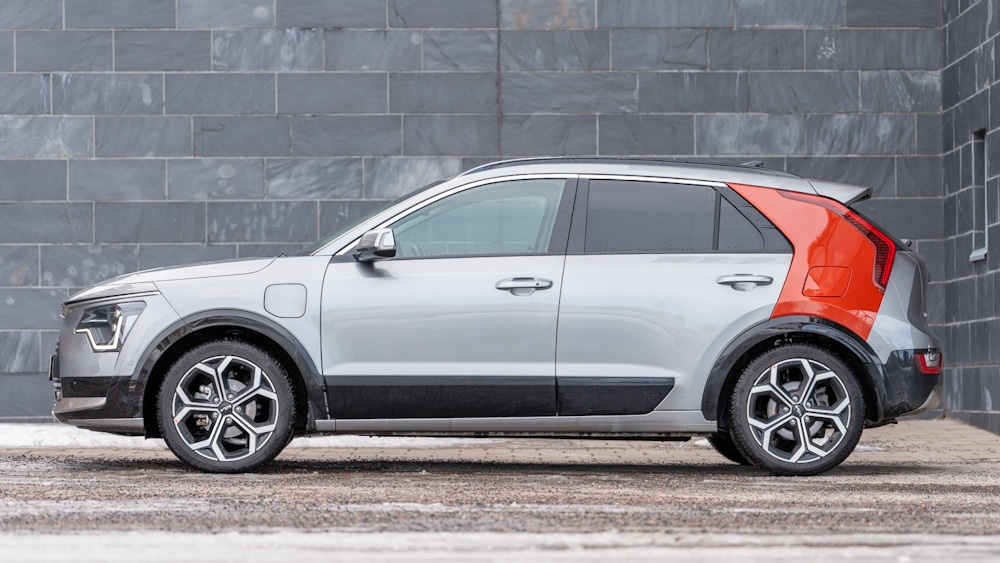
The Niro hybrid and charging hybrid models share the same combustion engine and gearbox. The engine is a 1.6-litre, 105 hp, 144 Nm four-cylinder petrol engine. The gearbox is a six-speed dual clutch. The difference between the models in terms of power train comes in the size of the electric motors and battery.
In the hybrid model, charging is automatic only while driving and therefore, like the charging hybrid, the battery cannot be charged from an external power source. In the hybrid model, the electric motor is particularly useful for starting off, while the charging hybrid can cover a distance of several tens of kilometres on electricity alone. The maximum output of the charging hybrid’s electric motor is 62 kilowatts, about double that of the hybrid model.
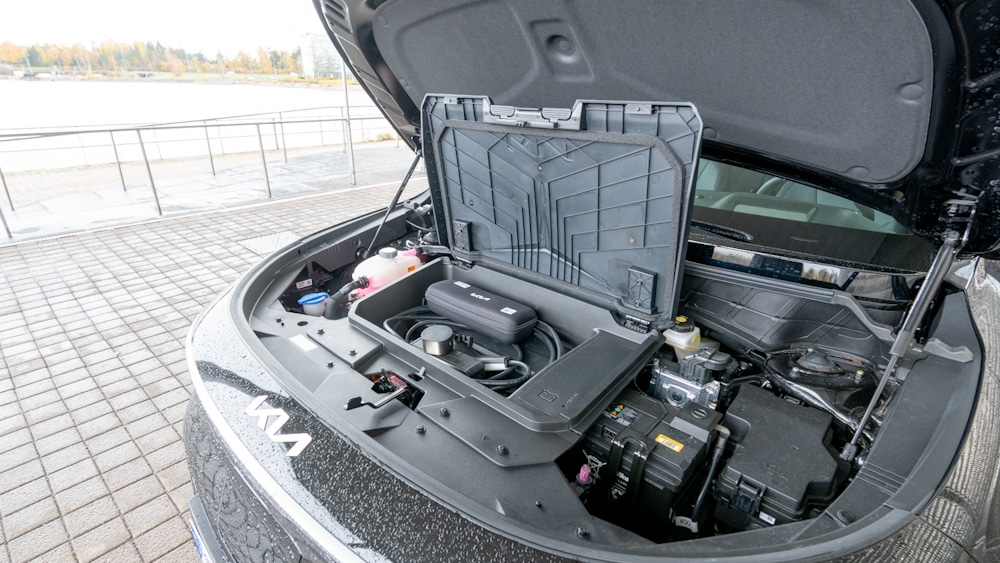
The average temperature during the test drive of the charge hybrid was a few degrees below zero. In the fuel consumption test, the charging hybrid covered 50 kilometres in 4 degrees below zero, with the battery charge dropping from 95% to 15%, a good performance at this temperature. The drive included urban and road sections at speeds of 30-80 km/h.
In normal traffic, progress under electric power alone was smooth and there was no need for an internal combustion engine, at least at lower speeds. With a flat battery, the car consumed between 4.5 and 5.5 litres of fuel per 100 km when running on petrol.
More power for the all-electric model
The Niro charging hybrid proved to be a comfortable companion during the test drive week, and the electric range in particular was a positive surprise in sub-zero temperatures. After a week of test drives, however, the change was surprisingly big when the all-electric EV model from Niro came underneath. The controls and interior remained largely the same, but the electric powertrain seemed to bring the Niro to life at the very latest.
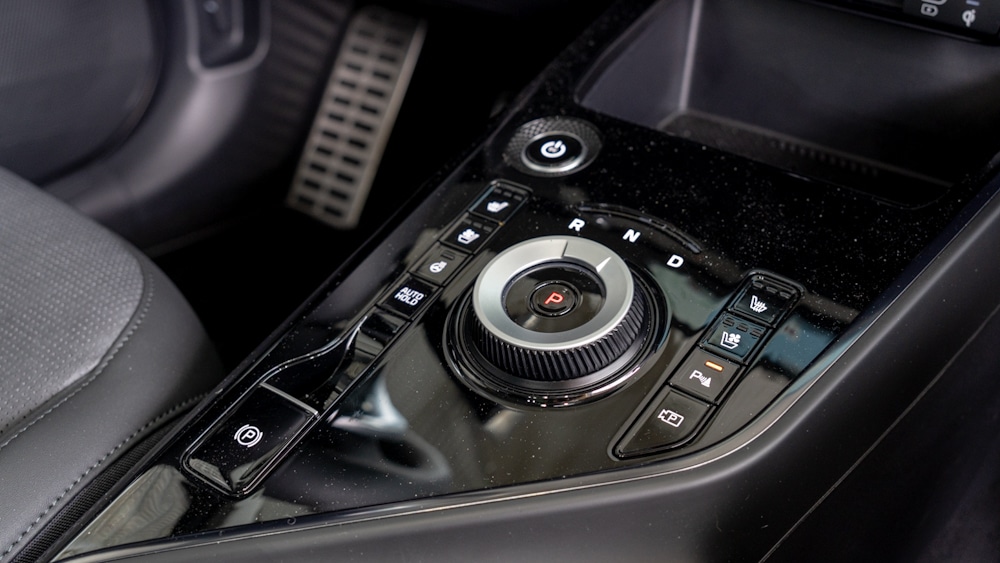
On paper, the PHEV and EV models are reasonably close in performance, but the instant power from the electric motor adds a lot more pep to the ride. The difference between the two models was most noticeable in brisker acceleration and especially in shady conditions, where the all-electric model moved much more decisively than the charging hybrid.
The all-electric model’s engine produces a maximum output of 150 kilowatts and 255 Nm of torque. In terms of power, the all-electric offers around 20 horsepower more than the charge hybrid. In terms of torque, the full electric loses 10 Nm to the charging hybrid.
Like the charge hybrid, the full electric model proved to be an energy hog. The battery has a capacity of 64.8 kWh and a range of 460 kilometres. The test runs were carried out in zero wind and in mixed driving the average electricity consumption was 17-20 kWh/100km. The actual operating range in zero wind comes to around 350 km. On the road, at an average speed of 100 km/h and a temperature of 1°C, consumption was 18.8 kWh/100km, giving an operating range of around 345 km.
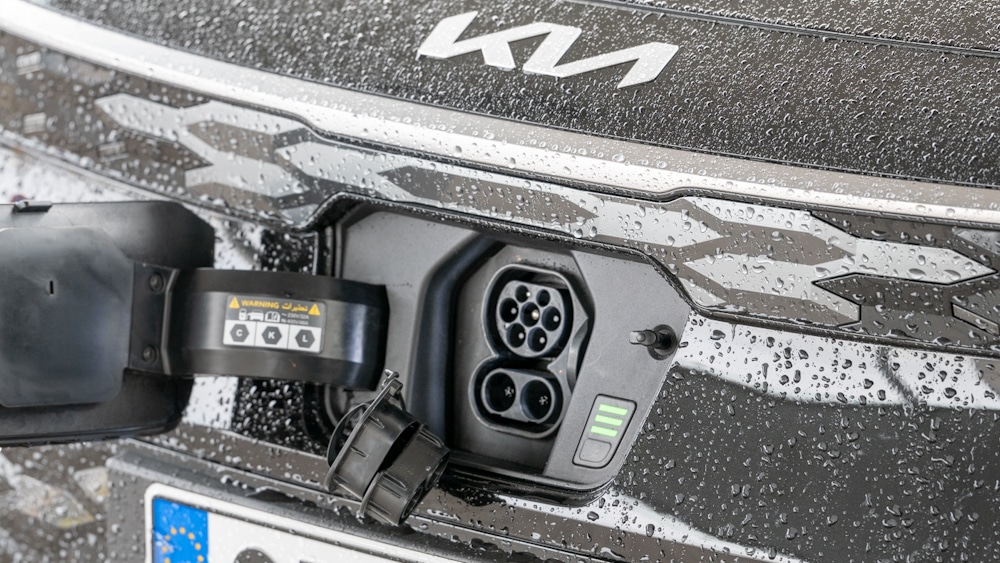
The full-electric model has a flap on the rear of the steering wheel to control the intensity of the braking energy recovery. The energy recovery is sufficiently high that a driver with a little foresight can drive in i-Pedal mode using only the accelerator pedal. The car slows to a stop with the foot off the accelerator.
The pedal boost in the car is exceptionally strong, especially for the brake pedal. The feel of the brake pedal is very light and it sometimes feels a little awkward to apply the brakes smoothly.
This is particularly noticeable at low speeds, where the brakes are sharp and uncomfortably sharp, even when the co-driver is pointing them out. In the all-electric model, the problem can be circumvented by driving with single-pedal tactics.
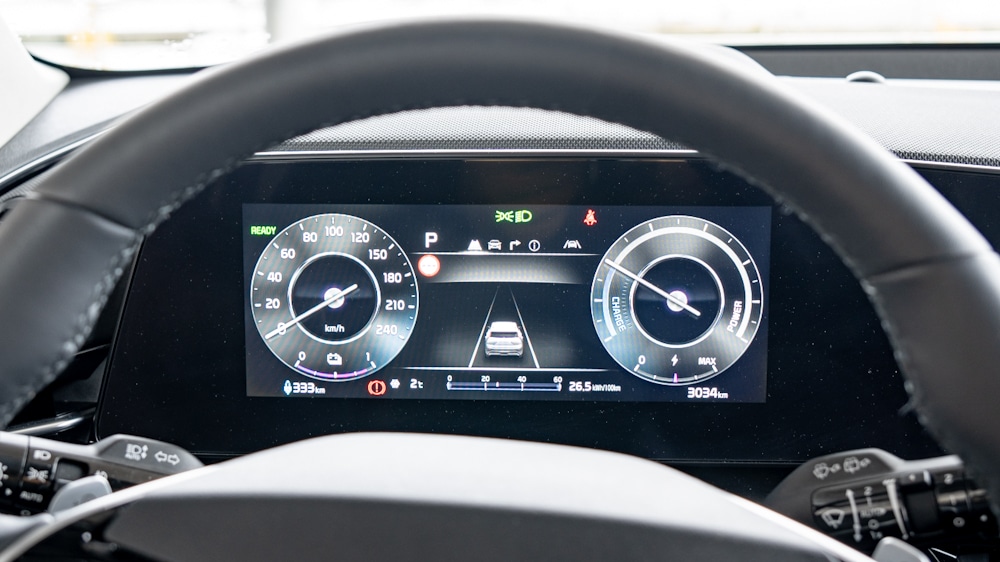
The smooth cruising, which is even more so than with the enhanced brake pedal, is hampered by the slowness of the fast-charging system in the all-electric model. It should be remembered that smaller full-electric models often have lower charging power than cars with larger batteries, but the Niro’s charging power is only 72 kilowatts at maximum.
In the charging test, the fast charging station was reached with 12% reserve. The outside temperature was 1 degree above zero and the car had been in mixed driving for about an hour before charging. The car started charging at 70 kW, quickly dropped to around 50 kW, and rose again to 70 kW at 25%. For one reason or another, the charge was interrupted twice between 20% and 30%. At 65% battery charge, the charging power dropped below 50 kW for the first time, and at 80% charge the charging power was only 25 kW.
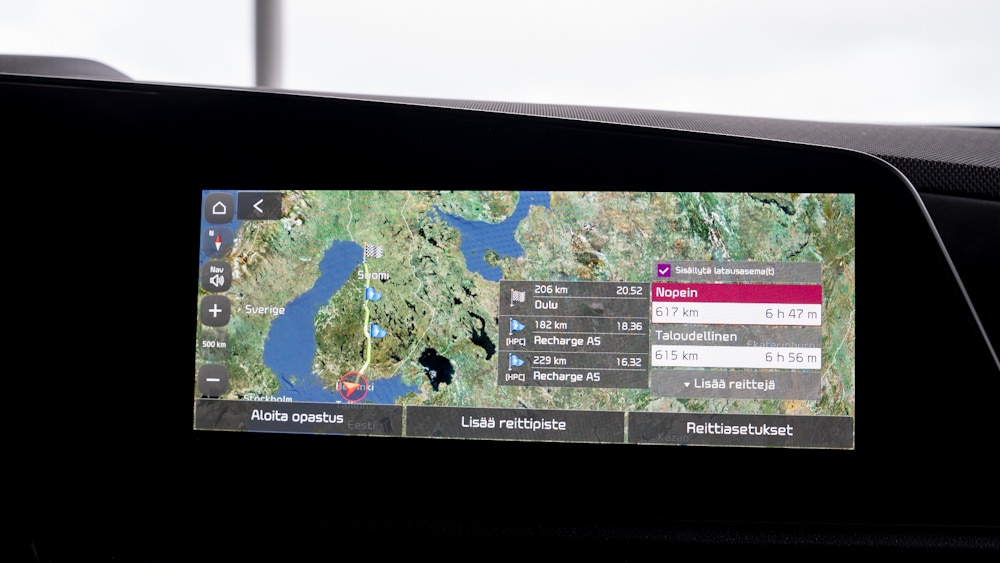
Charging the battery from 12% to 80% took a total of 53 minutes. The exact amount of kilowatts charged was not available because the charge was interrupted and restarted twice. However, the battery was calculated to charge a total of about 45 kWh of energy in just under an hour, which is enough to make even the most leisurely commuter’s shoes chafe.
With the amount of electricity charged, you can go a good 200 kilometres in zero temperatures, so there are much faster mileage-sucking alternatives on the market for those who frequently travel longer distances.

A small help to fast-charging performance in colder weather is provided by the car’s battery pre-heating, which works when navigating to a fast-charging station and the battery temperature is below 21 degrees Celsius.
If getting to your destination quickly is not the main thing, but the journey itself, Niro does an excellent job of planning the necessary charging points in the navigator along the way. From Helsinki to Oulu, the car planned two charging points. However, the car does not give a time estimate for the charging points, but the total time for the journey shown is the same as if the journey were driven directly to the destination without stopping.

The navigator refuses to show the remaining percentages at the destination. Instead, when the car runs out of power, it displays the remaining operating distance with the air conditioning on and off.
In Finland, the major service providers and charging points seem to be comprehensively represented in the navigation system.
Car of the Year in Finland 2023
Despite the above criticisms, the Niro as a whole is, dare we say it, a model without equal. The list of standard and optional equipment is very comprehensive for this size of car, with equipment ranging all the way up to a power sunroof. The functionality of the equipment and systems, already proven in previous test drives of the Kia, also applies to the Niro.
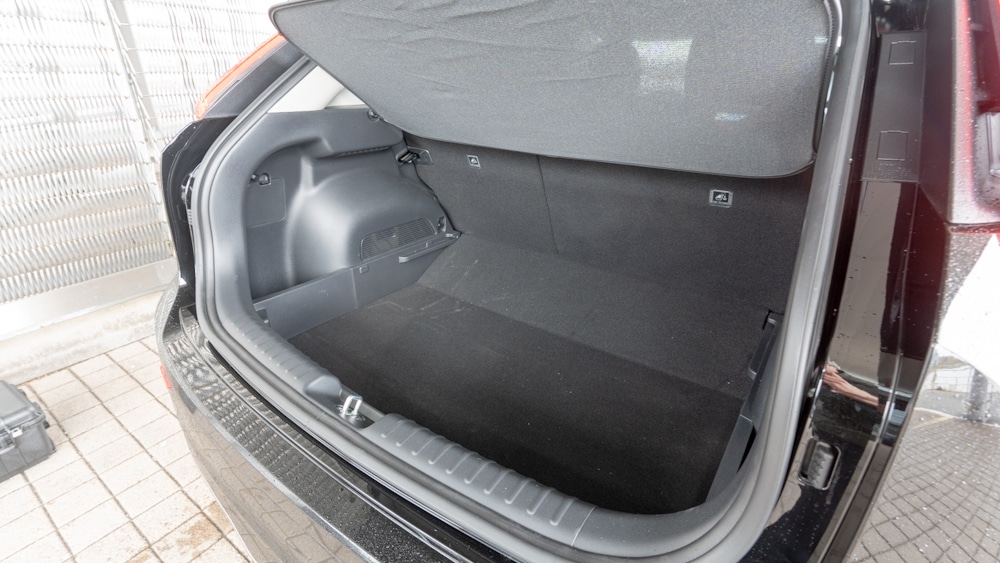
Three power lines are available, from which the customer can choose the best option for their specific application, taking into account their budget. Depending on the power line and equipment level, there is a huge price difference of almost €20,000 between the starting prices, so there really is plenty of choice.
For a car of its size, the spacious Niro offers between 348 and 475 litres of boot space. The 348-litre boot, which is a little tight in the charge hybrid model, expands in the all-electric model when the boot floor is lowered by a tenth of a centimetre, creating more space in the height direction.
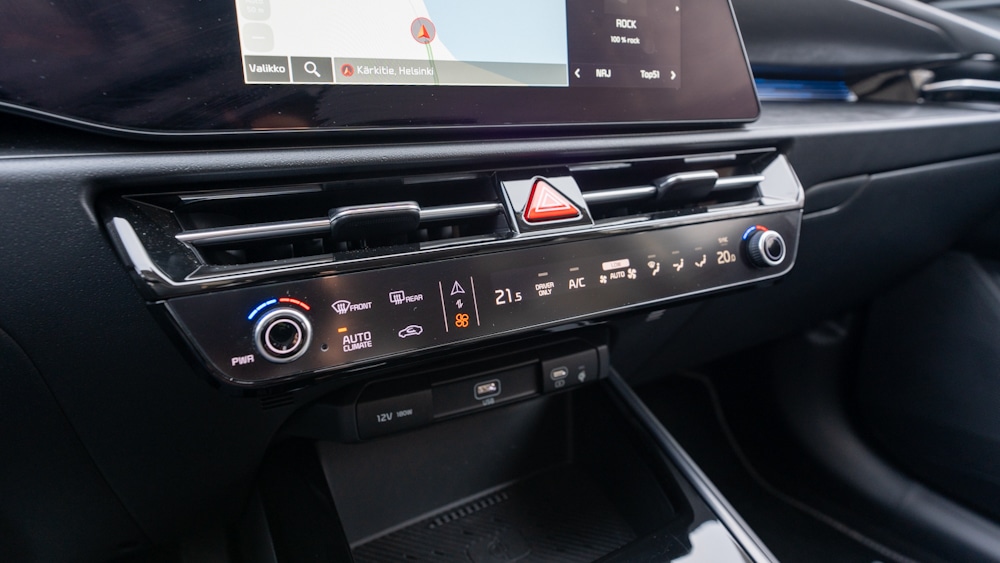
The 5.5-kilowatt auxiliary interior heater, which always comes standard in the all-electric model, is available as standard in the Charged Hybrid in other trim levels than the starting prices in the LX model. The auxiliary heater draws its power directly from the traction battery, so you don’t have to wait long for warm air, even in the charge hybrid. The interior preheating and cooling can be controlled remotely from your mobile phone.
Depending on the model, the Niro also has a dashboard that is projected onto the windscreen. Lane Departure Warning and other assistants work well even in snowier conditions, and the driver is alerted by the hud when it’s unsafe to change lanes, for example. The car can handle lane changes automatically with just a blink of an eye.
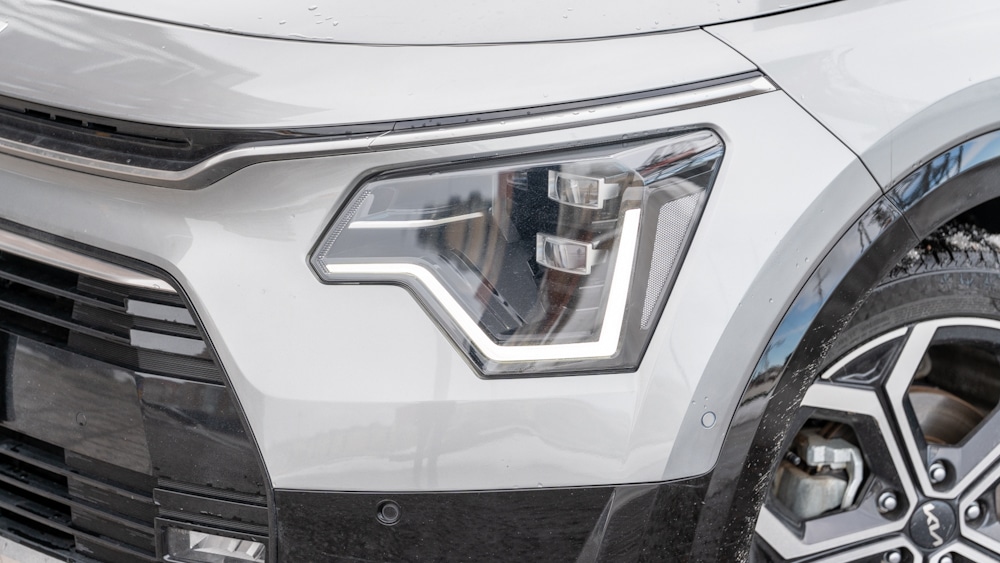
The all-electric Niro can draw 3.6 kW. of power. This makes it possible, for example, to use larger power tools in an unpowered cottage or to fill up swimming toys and airbeds.
Last year, the Kia Niro was voted Car of the Year in Finland, ahead of the much more prestigious Mercedes EQE, which came in second.
Kia Niro PHEV
- Engine: 1598 cm³, 4-cylinder, petrol
- Combustion engine power: 105 hp / 77.2 kW. @ 5700 rpm.
- Combustion engine torque: 144 Nm. @ 4000 rpm.
- Electric motor power: 62 kW. (84.3 hp.)
- Electric motor torque: 203 Nm.
- Total maximum power: 134.6 kW, 183 hp.
- Total maximum torque: 265 Nm.
- Acceleration: 9.6 sec. (0-100 km/h)
- Driving battery capacity: 11.1 kWh.
- Manufacturer’s declared range (on electric power): 59-65 km.
- Maximum charging power (AC): 3.3 kW.
- Deadweight: 1519-1610 kg.
- Cargo space: 348 l.
- Traction: front-wheel drive
- Starting price: EUR 38 278
Kia Niro EV
- Electric motor power: 150 kW. (204 hp.)
- Electric motor torque: 255 Nm.
- Acceleration: 7.8 sec. (0-100 km/h)
- Driving battery capacity: 64.8 kWh.
- Manufacturer’s declared combined fuel consumption: 16.2 kWh/100km.
- Manufacturer’s declared range (combined): 460 km.
- Test drive consumption: 17-20 kWh/100km.
- Test-driven range on a single charge: 324-381 km.
- Maximum charging power (DC): 72 kW.
- Maximum charging power (AC): 10.5 kW.
- Deadweight: 1682-1739 kg.
- Cargo space: 475 l.
- Traction: front-wheel drive
- Starting price: 44 989 euros
